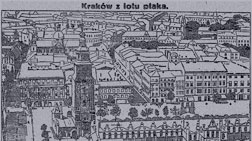In 1995, CRL received several suggestions regarding the need to coordinate and facilitate the creation of a microform project for Slavic and East European area studies. All of the existing microform projects had formed under the library arm of the respective scholarly associations, and only later sought out CRL to meet storage and administrative needs. SEEMP marked the first time that CRL staff had been present at the creation of this type of project.
A Steering Committee was formed in June 1995 with representatives from several groups already active in cooperative endeavors in this area: June Pachuta Farris (University of Chicago) representing CIC Slavic bibliographers; Michael Biggins (University of Washington) representing several Pacific Coast research libraries; Robert Davis (New York Public Library) representing the East Coast Consortium; and Jared Ingersoll-Casey (Ohio State University) representing ALA’s Slavic Preservation Discussion Group. Marlys Rudeen was CRL’s liaison to the group. The committee served as a forum for discussion on the need for preservation activities in Slavic and East European Studies and how these needs might be met by the formation of a microform project. Would such a cooperative project be advantageous? What should its focus be? Which institutions, if any, are willing to commit to such a project? What kind of structure would work best?
Similar discussions had taken place several years earlier, Gay Dannelly from Ohio State University had drafted a set of possible bylaws. The Steering Committee began by examining them, and also by looking at the bylaws governing several existing microform projects. All the committee members were from institutions that belonged to one or more of the existing projects, so they were already familiar with the basic concepts and operations.
The draft bylaws were broken down into sections to make them a bit more manageable, and circulated by e-mail to the Steering Committee. Comments came back to the CRL liaison, who in turn posted them to other committee members, adding her own observations on how some of the other projects had structured their governance or dealt with issues. In this manner, the bylaws were examined and revised over the summer before being posted more widely to the Slavic listserv in October.
As discussions progressed, agreement on basic purposes and structures emerged. The general mission statement is as follows: “The purpose of The Slavic and East European Microform Project (SEEMP) is to acquire microform copies of unique, scarce, rare, and/or unusually bulky and expensive research material pertaining to the field of Slavic and East European studies; and to preserve deteriorating printed and manuscript materials of scholarly value. Geographically its areas of interest include the countries of Eastern and Central Europe, the Baltic States, Mongolia, and the countries that were formerly part of the Soviet Union.”
The structure will be the same as the existing projects, organized on the principle of institutional membership with a committee of the whole and an executive committee to carry out project business between annual meetings.
Membership fees will be $600 per year, entitling member institutions to: vote on all questions before the committee; borrow all project materials; purchase positive copies of SEEMP-funded negative microforms at member prices; and propose suitable titles for original filming or purchase from commercial sources.
The Steering Committee issued a formal invitation to membership in January 1996, asking institutions for a commitment to join by April 1, 1996. Invoices went out at the beginning of the CRL fiscal year, July 1. Once institutional commitments were received, the bylaws were adopted by a mail ballot. The Steering Committee then solicited nominations for the Executive Committee and elections were held in fall 1996.
The first meeting of SEEMP took place at the 1996 annual conference of the American Association for the Advancement of Slavic Studies in Boston on Nov. 17, 1996. The minutes for this meeting can be found under Recent Meetings.
CRL staff has been impressed and encouraged by the work of the Area Study Microform Projects over the years. They have gathered and preserved an amazing amount of valuable and rare material, making it available to scholars for generations to come. The staff looks forward to working with Slavic and East European bibliographers as they begin this new cooperative effort.
